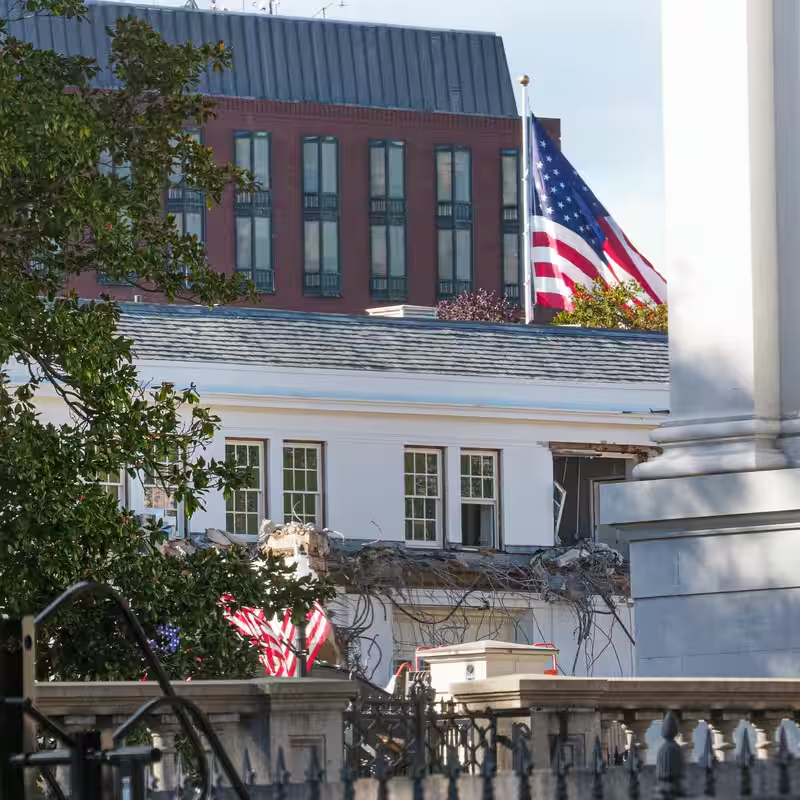Table of Contents
- Demolition Begins Despite Promises
- The $250 Million Ballroom Plan
- Historical Concerns and Public Reaction
- What Happens Next?
- Sources
Demolition Begins Despite Promises
On Monday, October 20, 2025, construction crews began tearing down part of the White House’s East Wing—a move that has reignited debate over President Donald Trump’s ambitious renovation plans. The ballroom project, estimated to cost $250 million, now visibly involves the partial demolition of a historic section of the presidential residence, contradicting earlier assurances from the administration.
“We’re building right behind us, we’re building a ballroom,” Trump told a visiting collegiate baseball team on the South Lawn, seemingly unfazed by the ongoing destruction just yards away.
The president had previously pledged that construction would not “interfere with the current building.” Yet by late afternoon, reporters near the Treasury Department witnessed a track excavator ripping walls off the East Wing, leaving behind piles of debris—window panes, bricks, and tangled wiring.
The $250 Million Ballroom Plan
The proposed ballroom is billed as a grand addition to the White House complex, intended for state functions, diplomatic receptions, and high-profile events. According to internal White House documents reviewed by The New York Times, the project includes a multi-story structure with crystal chandeliers, marble floors, and a stage capable of hosting orchestras.
While exact funding sources remain unclear, critics question whether taxpayer dollars are being used—and whether such an opulent addition aligns with national priorities amid economic uncertainty.
Below is a quick comparison of the East Wing’s traditional role versus its proposed transformation:
| East Wing (Traditional) | Proposed Ballroom Use |
|---|---|
| Office space for First Lady’s staff | Grand reception hall |
| Family movie theater | Stage and performance area |
| Visitor entrance and coat check | Luxury lounge and VIP seating |
| Historic preservation zone | Modern architectural expansion |
Historical Concerns and Public Reaction
Preservationists have voiced alarm over the demolition. “The East Wing may not be as iconic as the West Wing, but it’s part of the White House’s evolving architectural story,” said Dr. Elena Martinez, a historian at the National Trust for Historic Preservation. “Once it’s gone, it’s gone forever.”
Public opinion appears divided. Social media reactions range from support for “modernizing the People’s House” to outrage over what some call “a vanity project during a cost-of-living crisis.”
Meanwhile, White House officials insist the project complies with all federal guidelines and has undergone necessary reviews. However, no public environmental or historic impact assessments have been released to date.
What Happens Next?
Construction is expected to continue through 2026, with completion slated before the next presidential inauguration cycle. The General Services Administration (GSA) has been tapped to oversee logistics, though questions remain about oversight and transparency.
As the dust settles—literally and politically—Americans are left wondering: Is this ballroom a symbol of national pride or presidential excess?




